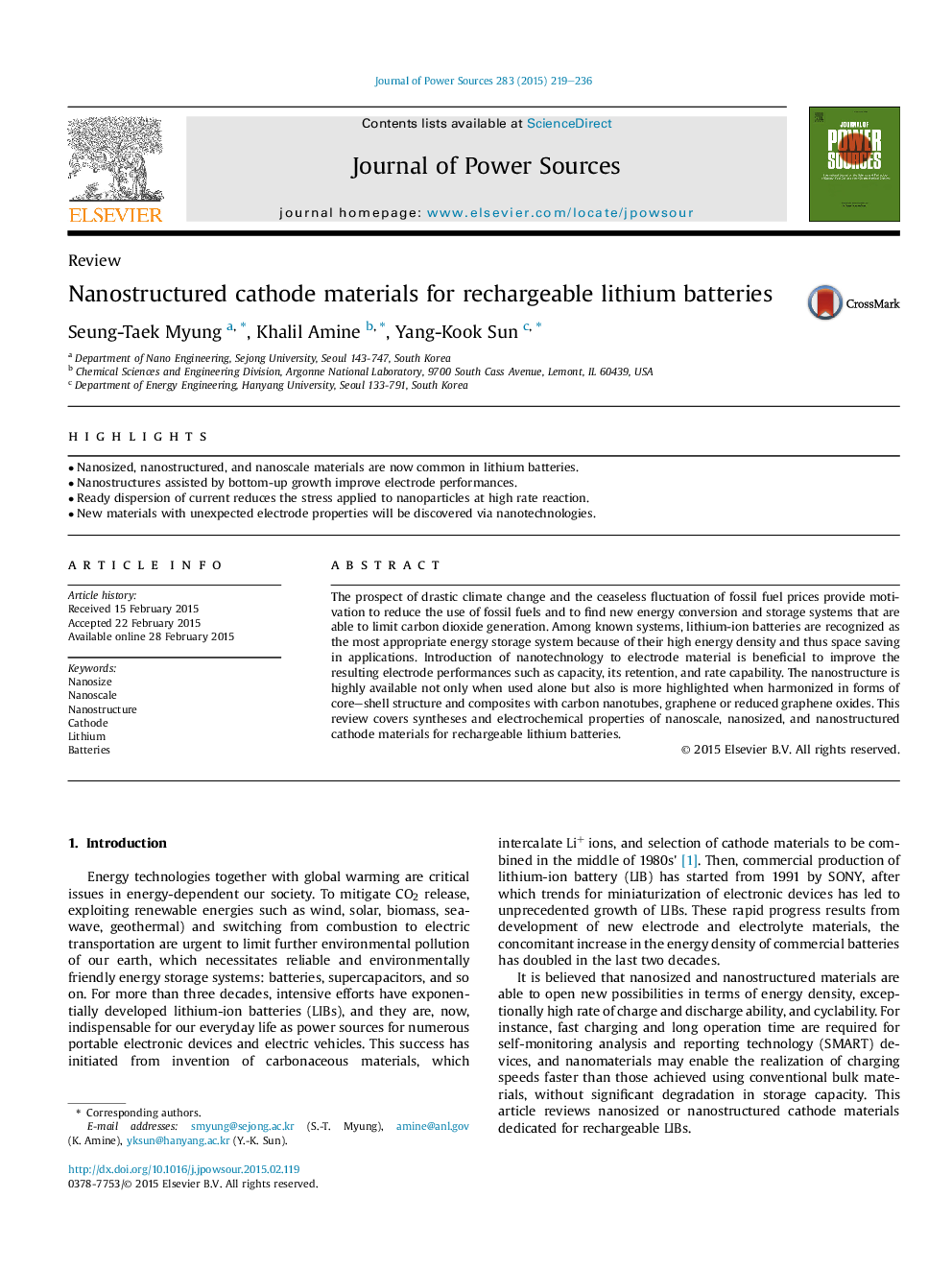| Article ID | Journal | Published Year | Pages | File Type |
|---|---|---|---|---|
| 1292832 | Journal of Power Sources | 2015 | 18 Pages |
•Nanosized, nanostructured, and nanoscale materials are now common in lithium batteries.•Nanostructures assisted by bottom-up growth improve electrode performances.•Ready dispersion of current reduces the stress applied to nanoparticles at high rate reaction.•New materials with unexpected electrode properties will be discovered via nanotechnologies.
The prospect of drastic climate change and the ceaseless fluctuation of fossil fuel prices provide motivation to reduce the use of fossil fuels and to find new energy conversion and storage systems that are able to limit carbon dioxide generation. Among known systems, lithium-ion batteries are recognized as the most appropriate energy storage system because of their high energy density and thus space saving in applications. Introduction of nanotechnology to electrode material is beneficial to improve the resulting electrode performances such as capacity, its retention, and rate capability. The nanostructure is highly available not only when used alone but also is more highlighted when harmonized in forms of core–shell structure and composites with carbon nanotubes, graphene or reduced graphene oxides. This review covers syntheses and electrochemical properties of nanoscale, nanosized, and nanostructured cathode materials for rechargeable lithium batteries.
